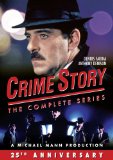| Reviews & Columns |
|
Reviews DVD TV on DVD Blu-ray 4K UHD International DVDs In Theaters Reviews by Studio Video Games Features Collector Series DVDs Easter Egg Database Interviews DVD Talk Radio Feature Articles Columns Anime Talk DVD Savant Horror DVDs The M.O.D. Squad Art House HD Talk Silent DVD
|
DVD Talk Forum |
|
|
| Resources |
|
DVD Price Search Customer Service #'s RCE Info Links |
|
Columns
|
|
|
Crime Story: The Complete Series
THE SHOW:
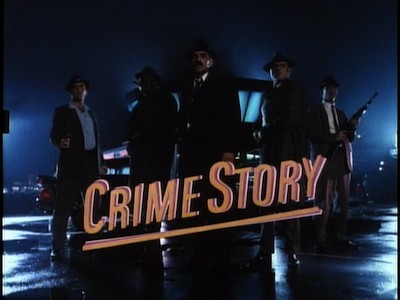
In the mid-1980s, the success of Miami Vice had made producer/director Michael Mann a hot commodity. NBC gave him carte blanche to helm another show, and in 1986, he premiered Crime Story, a police drama created by Gustave Reininger and Chuck Adamson. Set in Chicago in 1963, the series was a no-holds-barred portrayal of the rise of organized crime and the dogged efforts of the dedicated police force that tried to stop the mobsters from grabbing all the loot. Like an updated version of The Untouchables where the good guys aren't squeaky clean crusaders but instead tough customers who get the job done in ways other men can't.
Crime Story lasted for two seasons, clocking in at 44 episodes. It kicks off with a two-hour pilot directed by Abel Ferrara (the original Bad Lieutenant) that works partially as a stand-alone movie and also the set-up for what is to come. The series' central conflict was between Police Lieutenant Mike Torello (Dennis Farina, Get Shorty) and on-the-rise gangster Ray Luca (Anthony Denison, The Closer). Luca represented a new school of American crime, the now-cliché image of a made man looking to take his dirty business and cross over into legitimate dealings. As head of the Major Crime Unit in Chicago, Torello makes stopping Luca his top priority, even as the bad guy systematically takes out rivals and allies alike. If Luca truly is new school criminality, then Torello is old school justice. Beyond the core trappings of shotguns and fedoras vs. pistols and pompadours, the clash between these two opposing forces is almost operatic in its fury. These guys are myths as much as they are men, their primal rivalry matched only by their similar appetites for blood, booze, and broads.
The first half-season of Crime Story details Luca's elevation in Chicago, working with Florida-based mafia dons to build a country-wide gambling racket that eventually leads them to take over casinos in Vegas. Torello and his men throw wrenches into the works, but are essentially stymied at every turn, culminating in a federal trial where a crook who turned state's evidence tries to finger Torello as a dirty cop. Ancillary to the tale of police and thieves is the rise of attorney David Abrams (Stephen Lang, currently on Terra Nova). Abrams is a public defender and civil rights activist trying to outrun his father's reputation as a mob lawyer. He rebuffs Luca's advances, instead befriending Torello and aiding him in his strategizing. He also gets a romantic subplot with a journalist, who also happens to be an African American, leading to story points about race in America in the early 1960s. The reporter is played by no less than Pam Grier (Jackie Brown), and they meet during a case where Abrams defends a black man against his slumlord. The accused in this case is Pulp Fiction's Ving Rhames.
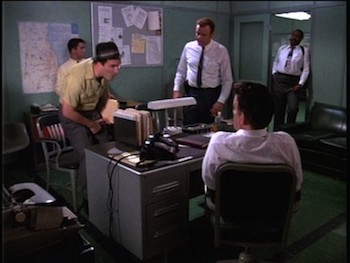
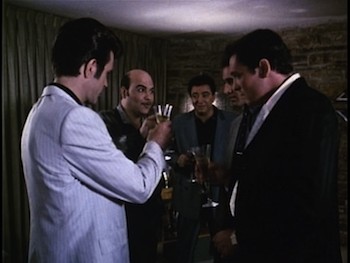
The 1960s backdrop at times feels little more than an excuse to play cool music, drive big cars, and wear stylish clothes. The attention to language and period detail is not as rigorous as, say, Mad Men, though the show does make use of the neon landscapes of '60s Americana and the emerging pop art scene (check the apartment walls of Torello's first mistress, for instance). Social issues come up from time to time. In addition to the racial storylines, there is also, for instance, an episode about labor strife and tampering with unions (Lee Ving from the band Fear and Anthony Heald from Silence of the Lambs play battling union leaders). Torello's particularly brutal brand of law enforcement also reflects a time before more touchy-feely portrayals of police work. You aren't going to hear anyone's Miranda rights read here. Ironically, Crime Story also came at a time when censorship standards were far different, and as a result, despite its violence, the show is a lot less gory than what we might see on more sensitive television series today.
Though Crime Story landed with a bang when it premiered, in retrospect, it's actually pretty slow to start. The Chicago-based cycle is oddly paced and never quite gels. It's not until the mid-season move to Vegas that things really get going. Torello and Abrams join the justice department and follow Luca to Nevada, where he has taken over one casino and is starting to put the entire city under his thumb. There is a renewed vigor in the scripts, and a better sense of the characters and their respective purposes. Production values also appear to rise, with brighter colors, a better period soundtrack, and more cohesive art direction. Perhaps it was the change of scenery, or maybe now that Crime Story was doing well, NBC decided to pump some extra cash into the production. Michael Mann even steps behind the camera for one of the early Vegas episodes.
Guest stars and then-unknown faces abound in these early shows. In addition to Grier and Rhames, Michael Madsen, Andrew "Dice" Clay, and Eric Bogosian play recurring characters that are part of Luca's organization, and a pre-Rocketeer Bill Campbell is one of Torello's men. Other people making appearances include David Caruso, jazz musicians Miles Davis and Dexter Gordon, Lili Taylor, Christian Slater, Lorraine Braco, Stanley Tucci, Debbie Harry, Paul Anka, Billy Zane, Laura San Giacomo, and David Hyde Pierce. Gary Sinise (CSI: New York) plays a good man who falls on hard times and gets in with the wrong crowd, and he directs two episodes, as well. Julia Roberts shows up as an abuse victim, and Kevin Spacey appears as a Robert Kennedy-esque Senator at the start of season 2.
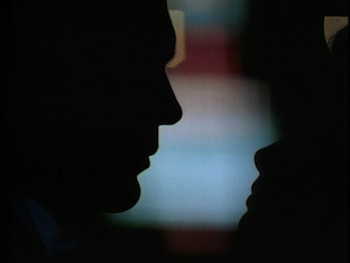
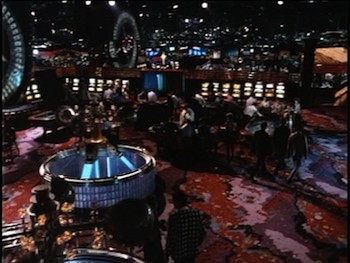
Season 1 ended with an infamous cliffhanger--Luca and his boy Pauli (John Santucci) getting caught on an atomic testing ground during a bomb blast--and Season 2 has an early turnaround with an audacious, improbable solution to the same. (Had Luca seen Indiana Jones & the Crystal Skull, he could have just hid in a refrigerator.) Hey, ratings wars being what they are, you can't blame the production team for trying to invigorate a little water-cooler attention. In truth, Season 2 sees Crime Story settling into a comfortable, confident zone. The drive is still the same--Torello hates Luca, Luca wants all the candy--but the scope widens. Despite the tenuous grasp Luca had on Vegas when he went on the run, the crime lord expands his empire here, looking worldwide and getting involved in the narcotics trade--a plot point that has been in contention from the beginning. The Vietnam War is getting underway, so globalization makes a kind of sense, reflecting the way America's tendrils were reaching across the world by this point in our history--and not always in good ways.
Farina is strong as Torello. His performance is ferocious, sometimes to the character's detriment. The attempts to humanize the police officer fail under the one-note portrayal. Then again, maybe that's the point, he can never turn it off. As a Marilyn Monroe stand-in points out when Torello hits on her, "You talk like a cop." He is a cop, pure and simple, nothing more and nothing less. This makes for some good drama, actually, in the show's Chicago material, when his marriage falls apart, but after that, Torello is really only believable as a bulldog. Luckily, no such attempts to humanize Luca are ever undertaken. Anthony Denison is a powerful villain--handsome, charismatic, and frightening. His rage is incendiary, but his colder moves are all the more intense for just how good the actor is at being menacing.
Season 2 ends with another outlandish cliffhanger, though this one is never to be answered. The network pulled the plug on Crime Story, leaving the characters--and their fans--suspended in mid-air in ways that transcend the figurative. Perhaps this is for the best. Given the mythic push and pull between good and evil that propelled the show for two seasons, there would be no gently going into the good night for these characters. It's all smash and grab, rough and tumble, and plummeting to their death may have been the only fitting solution. There was no other outcome that would be acceptable. Torello and Luca, destined for mutually assured destruction.
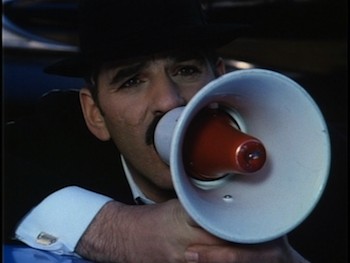
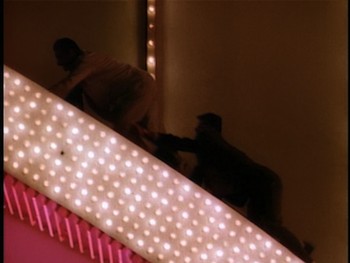
THE DVD
Video:
Image has put both seasons of Crime Story on 9 discs for the Complete Series collection. Generally, there are 5 episodes per disc, each clocking in at around 48-minutes, including in some cases extended "previously on" sequences (one was over 5-minutes long!). The full-frame presentation leaves much to be desired. The colors are often muted and the resolution is jaggedy and soft. The surface image is largely clean, though there are odd cuts for the commercials that are sometimes jarring. It's a pretty low-level presentation for a show of this reputation, it looks like not much was done to enhance the material for the digital video presentation.
I could have used with a "Play All" option, honestly, rather than having to select each show one by one. Also, more considered chapter breaks, allowing us to skip summaries and the opening credits, or even just using commercial stops as bookmarks. This here is as barebones as you can get.
Sound:
The Mono soundtracks sound okay. They are a little tinny at times, particularly in the higher volume registers. Dialogue is generally easy to understand, even when a little fuzzy. The audio design was originally pretty flat, designed for tiny television speakers, so they really could have done with a pass (if possible) to goose it up for modern systems.
As far as I can tell, this has all the original audio. Early on in Season 1, there are a few vintage tunes that sound like re-recordings from the original hits, but as far as I know, there were never any other tracks in their place. Given later appearances by songs from artists as big as Sam Cooke, the Rolling Stones, and Ricky Nelson, rights don't appear to be much of an issue.
Extras:
None. The discs are packaged in a thick "book" with two-tiered plastic trays, and it has an outer slipcover.
FINAL THOUGHTS:
Crime Story was a genuine phenomenon in the mid-1980s, and a show I regularly looked forward to. For the most part, this Michael Mann-produced police drama has aged well, excepting some clunky pacing and the timid nature of television writing back in the day. The show works best in the long haul, with the story of Lt. Mike Torello (Dennis Farina) and gangster Ray Luca (Anthony Denison) locking horns in a primal battle for ownership of the streets. Traveling from Chicago to Vegas and down to South America, Crime Story shows the big picture of organized crime's growth in the 1960s. Both seasons are collected in Image's complete boxed set, re-released for the show's 25th Anniversary. The package leaves something to be desired, the transfers aren't nearly up to current standards and there are no extras, but still, it's a good show, so Recommended.
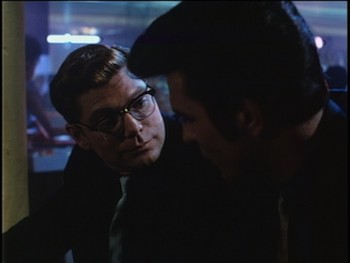
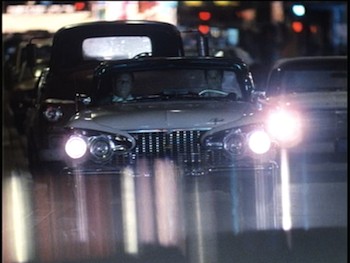
Jamie S. Rich is a novelist and comic book writer. He is best known for his collaborations with Joelle Jones, including the hardboiled crime comic book You Have Killed Me, the challenging romance 12 Reasons Why I Love Her, and the 2007 prose novel Have You Seen the Horizon Lately?, for which Jones did the cover. All three were published by Oni Press. His most recent projects include the futuristic romance A Boy and a Girl with Natalie Nourigat; Archer Coe and the Thousand Natural Shocks, a loopy crime tale drawn by Dan Christensen; and the horror miniseries Madame Frankenstein, a collaboration with Megan Levens. Follow Rich's blog at Confessions123.com.
|
| Popular Reviews |
| Sponsored Links |
|
|
| Sponsored Links |
|
|
| Release List | Reviews | Shop | Newsletter | Forum | DVD Giveaways | Blu-Ray | Advertise |
|
Copyright 2024 DVDTalk.com All Rights Reserved. Legal Info, Privacy Policy, Terms of Use,
Manage Preferences,
Your Privacy Choices | |||||||









